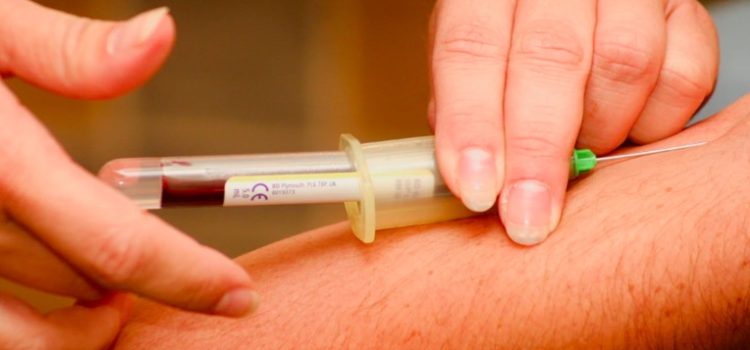

This article is an excerpt from the Shortform book guide to "Glucose Revolution" by Jessie Inchauspé. Shortform has the world's best summaries and analyses of books you should be reading.
Like this article? Sign up for a free trial here.
Are glucose spikes dangerous? How do frequent glucose spikes wreak havoc on your overall health?
In the short-term, glucose spikes can cause lethargy and brain fog. In the long term, they can contribute to many acute and chronic health conditions, such as diabetes, heart disease, cancer, as well as mental health problems.
Here’s a look at the health problems associated with frequent glucose spikes.
Glucose Spikes and Type 2 Diabetes
Type 2 diabetes is the condition that’s most commonly associated with increased glucose levels. It results from the relationship between glucose and insulin: First, when we experience glucose spikes, the pancreas releases insulin to store away the excess glucose as glycogen in the liver, muscles, and fat. The more glucose there is, the more insulin is released, and the more glucose has to be stored as fat.
Second, as the pancreas releases more and more insulin, our cells become resistant to the hormone. Because of this resistance, larger quantities of insulin are needed to store the same amount of glucose as glycogen.
Eventually, the storage system fails—the body can’t store glucose as glycogen anymore. With nowhere and no way to store glucose molecules, their concentration in our bodies increases permanently.
Here are the four biggest risks associated with frequent glucose spikes.
1. Heart Disease
Inchauspé states that elevated glucose levels and frequent glucose spikes can also lead to heart disease in the long term. This is because glucose spikes contribute to cholesterol accumulation beneath the lining of our blood vessels, which sets off heart disease.
(Shortform note: In addition to damaging blood vessels by causing cholesterol accumulation, persistently high glucose levels damage the nerves that control the heart and blood vessels. This nerve damage further contributes to heart disease and increases your chance of having a stroke. People with high glucose levels from diabetes are almost twice as likely to experience heart disease or stroke.)
How do glucose spikes lead to cholesterol accumulation? The cells lining our blood vessels are highly susceptible to mitochondrial stress, which glucose spikes directly contribute to. When experiencing mitochondrial stress, the blood vessel lining’s cells go from even to irregular in shape, making it easy for cholesterol to get caught in the grooves of the lining.
(Shortform note: Research has increasingly focused on the role of mitochondrial dysfunction in the development and progression of vascular diseases (diseases relating to the body’s vessels, especially blood vessels), particularly atherosclerosis, or the buildup of fat on the inner walls of arteries. High glucose levels exacerbate oxidative stress and inflammation, two conditions linked to atherosclerosis. There’s ongoing research into potential therapeutic interventions targeting mitochondrial damage and dysfunction for the treatment of vascular diseases, including treatments that suppress mitochondrial production of free radicals called reactive oxygen species.)
Additionally, when our glucose levels make our insulin levels too high, our liver begins producing a small type of cholesterol called LDL pattern B that gets stuck more easily on the edges of blood vessels than other types of cholesterol. High levels of glucose, fructose, and insulin contribute to the oxidization of LDL pattern B, making it even more likely to stick under the lining of our blood vessels. Finally, we experience heart disease when enough cholesterol accumulates to start hindering our blood flow.
(Shortform note: Cholesterol is a type of fat, and it must be connected to a protein to travel through the body. LDL cholesterol is a type of lipoprotein—a particle made of fat and protein. Specifically, it’s a low-density lipoprotein, meaning it contains more fat than protein. LDL cholesterol delivers fat to the cells as needed. In contrast, HDL cholesterol (or high-density lipoproteins) brings cholesterol to the liver, which eliminates the cholesterol from the body. Though research supports Inchauspé’s idea that the prevalence of small, sticky LDL pattern B cholesterol is connected to external factors such as glucose levels, there’s also a genetic component to the size of our LDL cholesterol.)
2. Cancer
According to the author, glucose spikes can increase our risk of cancer in three ways:
First, the increased number of free radicals that result from glucose spikes can increase our risk of dangerous DNA mutations. Studies suggest that this may be how cancer begins.
(Shortform note: Other factors beyond glucose spikes can lead to the proliferation of cancer-causing, DNA-altering free radicals, including tobacco smoke, UV radiation, environmental and occupational chemicals, air pollution, medical radiation, and certain viruses. Free radicals are most likely to cause cancer when they alter tumor suppressor genes that direct repairs of damaged DNA. Mutations in these genes are the primary reason cancer cells form.)
Additionally, high glucose levels lead to chronic inflammation, which encourages the rapid increase of cancer cells. Generally, inflammation is one way for the body to defend against harmful intruders, such as viruses and bacteria. However, the body attacks itself when it’s chronically inflamed, leading to tissue and organ damage.
(Shortform note: Inflammation happens when the body responds to pathogens by producing chemicals in immune cells that kill the intruders. However, these chemicals can also alter DNA in healthy cells, which increases the likelihood of cancer-causing mutations. Symptoms of chronic inflammation may not be obvious at first, making it harder to prevent it from developing into more serious conditions. Typical indicators of chronic inflammation include muscle and joint discomfort, weight gain and unexplained weight loss, sleep disorders, skin problems, frequent infections, digestive problems, fever with an unknown cause, and mood disorders.)
Finally, high levels of insulin that result from elevated glucose levels make cancer spread faster, increasing the likelihood that we’ll die from it. (Shortform note: Increased insulin levels offer more opportunities for cancer cells to develop because insulin encourages cell production and decreases cell death. The more cells your body grows and the fewer that die, the more likely it is that some will develop into abnormal cancer cells. Specifically, research has linked high insulin levels with increased risk of colorectal, breast, and prostate cancers.)
3. Mental Health Issues and Cognitive Decline
Inchauspé also describes how glucose spikes can contribute to mental health struggles and cognitive decline. First, research suggests that people who eat diets that lead to frequent glucose spikes experience more mood disturbances and instances of depression than people whose diets result in more stable glucose levels.
(Shortform note: MRI data suggest that elevated glucose levels can lead to depression because they hinder connections in a part of the brain that regulates emotions and self-perception, which seriously affects people’s moods. Additionally, consistently high glucose levels contribute to the dysregulation of glutamate, a neurotransmitter that’s associated with bipolar disorder and major depressive disorder.)
Second, glucose spikes can contribute to the development of cognitive diseases such as Alzheimer’s. When the mitochondria in brain cells get overloaded with glucose after repeated glucose spikes, they go into oxidative stress. This then causes neuroinflammation, which can turn into cognitive decline as brain cells get damaged.
(Shortform note: The damaging effects of high glucose levels on the brain come from more than just mitochondrial stress—they also stem from the insulin resistance caused by consistently elevated glucose levels. Too much glucose means the body produces too much insulin, and over time, this can make it more difficult for insulin to enter the brain. Without enough insulin, the brain can’t process enough glucose to power its numerous cognitive processes. Cells in the hippocampus—the memory center of the brain—are especially vulnerable to insulin deficits, which explains why glucose-related brain diseases like Alzheimer’s involve loss of memory.)
4. Cravings and Hunger
Finally, according to the author, glucose spikes can cause various issues related to our relationship with food, including food cravings and too-frequent hunger.
Food cravings typically happen during the crash following a glucose spike. Studies indicate that when our glucose levels drop, we crave high-calorie foods. For example, during a glucose crash, we’re more likely to choose a slice of pizza over a salad.
(Shortform note: In addition to craving high-calorie foods, we also often crave high-carb foods when our blood sugar is low, such as during a glucose crash. We do so partly because they increase feel-good neurochemicals in our body like serotonin (which evens out our mood) and endorphins (which help us feel calm).)
Additionally, we may experience too-frequent hunger when we have glucose spikes. This is because frequent glucose spikes lead to high insulin levels, and too much insulin can block the hormone leptin, which tells us when we’re full. Then, ghrelin—the hormone that indicates hunger—becomes more active, pushing us to eat more. Thus, when our glucose levels are dysregulated, we get hungry as soon as two hours after eating.
(Shortform note: Leptin is made in the fat cells, and it regulates long-term weight control. Ghrelin is synthesized in the stomach, and it has more to do with short-term appetite control. In addition to its role in regulating hunger, ghrelin increases fat storage, prompts the movement of food from the stomach to the intestines, and stimulates the release of growth hormones from the pituitary gland. Finally, ghrelin helps direct the release of insulin. Thus, when glucose spikes lead to overactive ghrelin, the way we store fat, gain weight, and digest food can all be disrupted and changed.)

———End of Preview———
Like what you just read? Read the rest of the world's best book summary and analysis of Jessie Inchauspé's "Glucose Revolution" at Shortform.
Here's what you'll find in our full Glucose Revolution summary:
- Why you feel hungry soon after you eat and get tired throughout the day
- The role glucose plays in your body, both positive and negative
- Strategies for taking control of your health and glucose levels






